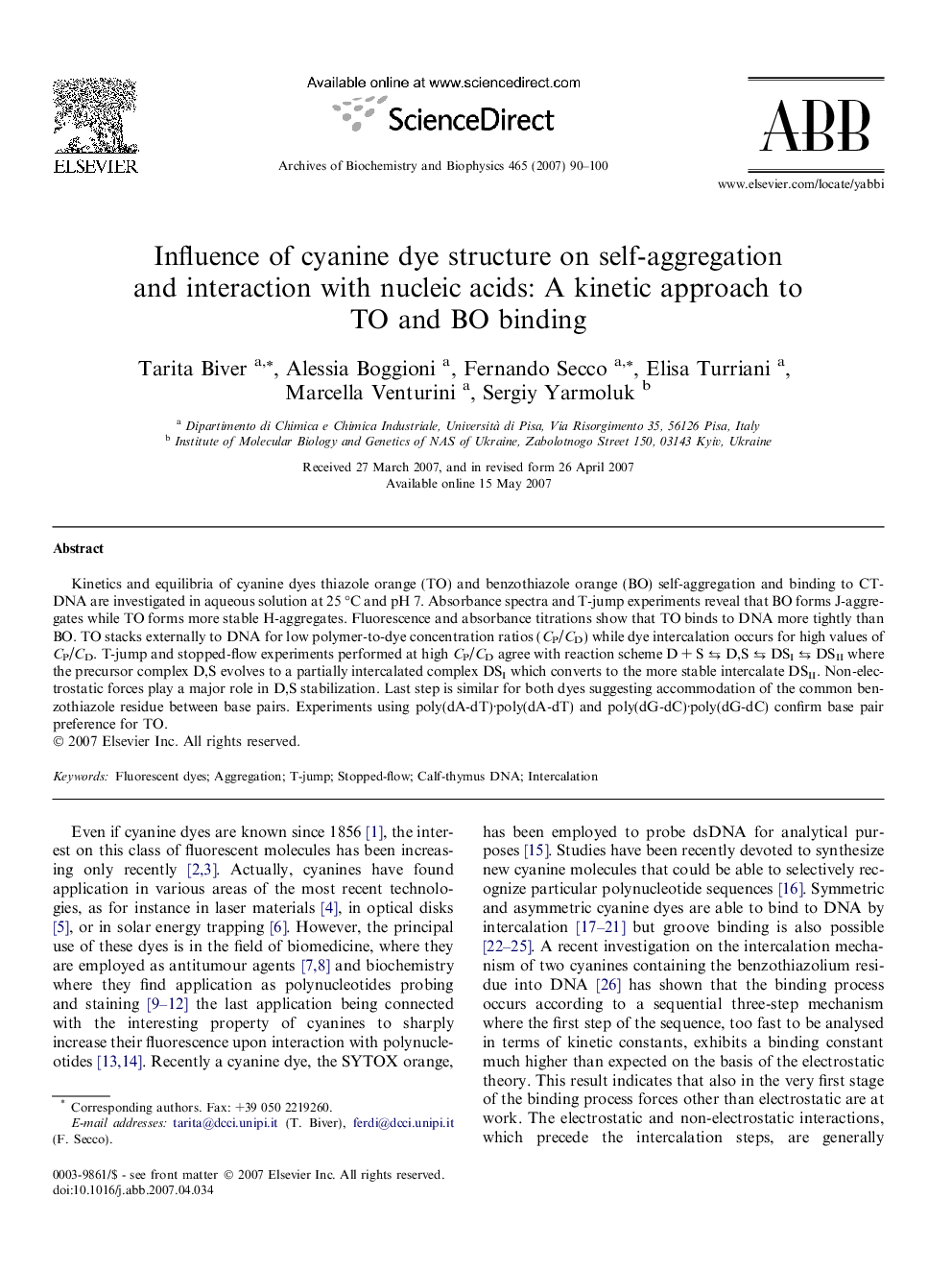| Article ID | Journal | Published Year | Pages | File Type |
|---|---|---|---|---|
| 1927044 | Archives of Biochemistry and Biophysics | 2007 | 11 Pages |
Kinetics and equilibria of cyanine dyes thiazole orange (TO) and benzothiazole orange (BO) self-aggregation and binding to CT-DNA are investigated in aqueous solution at 25 °C and pH 7. Absorbance spectra and T-jump experiments reveal that BO forms J-aggregates while TO forms more stable H-aggregates. Fluorescence and absorbance titrations show that TO binds to DNA more tightly than BO. TO stacks externally to DNA for low polymer-to-dye concentration ratios (CP/CD) while dye intercalation occurs for high values of CP/CD. T-jump and stopped-flow experiments performed at high CP/CD agree with reaction scheme D + S ⇆ D,S ⇆ DSI ⇆ DSII where the precursor complex D,S evolves to a partially intercalated complex DSI which converts to the more stable intercalate DSII. Non-electrostatic forces play a major role in D,S stabilization. Last step is similar for both dyes suggesting accommodation of the common benzothiazole residue between base pairs. Experiments using poly(dA-dT)·poly(dA-dT) and poly(dG-dC)·poly(dG-dC) confirm base pair preference for TO.
